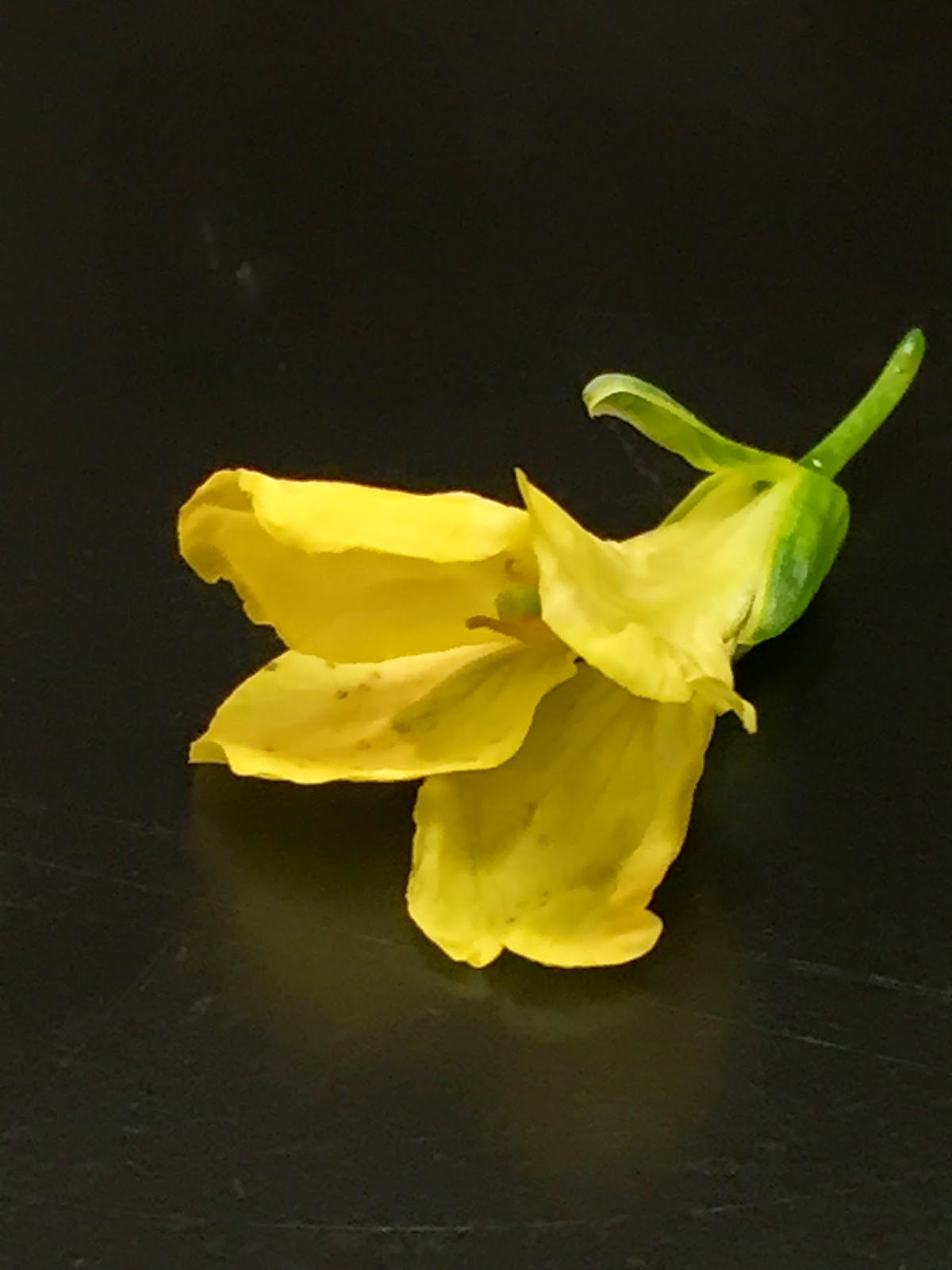Yesterday I dissected a flower from our broccoli plant do figure how the plant and others like reproduce. Throughout the dissection, I got to see each part of the flower that plays an important role in the production.
Thursday, March 26, 2015
Anthers and Stigmas and Styles, Oh My!
My partner, Celi, and I picked a broccoli flower from the garden to examine and dissect. Before dissecting, we read about the reproductive anatomy of the flower. Flowers have both male and female parts, the male parts are called the anthers and the female parts are the stigma, style and ovaries. Below are pictures we took of the flowers reproductive anatomy through a microscope.
This picture shows the carpel, which contains the stigma and style. The style is the long tube in the middle and the stigma is the green point at the end of that tube.
This picture shows the anthers. The anthers are the frilly, curly tips to all the long tubes.
In this picture, the ovaries are seen inside of the style. The ovaries are little beads located at the base of the style.
This picture just shows the flower before dissection. The flower is from a broccoli plant in our garden.
Flowers are angiosperms, which means that they reproduce within themselves. Each flower contains all the necessary female and male parts to reproduce. As you know, the male parts are called the anthers. The anthers produce and store all of the flower's pollen.The female part of a flower is called the carpel. it is the innermost part of the flower and is home to all of the female reproductive organs. Inside of the carpel is the style, and inside of the base of the style are the ovaries. The ovaries are responsible for producing female gametophytes for the flowers reproduction. The carpel leo contains the stigma, which is located at the tops of the style. The stigma is a sticky ball that is responsible for collecting pollen. Once the female and male parts of the flower have worked together to produce gametophytes and pollen, the pollination process can begin. Pollination is different for every flower, some flowers spread pollen through the wind, while others use animals like bees. Overall, the flower is able to survive and populate with only the anatomy in itself.
Anthers and Stigmas and Styles, Oh My!
Today, my lab partner, Morgan, and I dissected a flower from the WGHS Gold Garden. We chose a flower from the broccoli plant. Over the dissection, we got to see each part of the flower and then we learned their functions. Through the following pictures, I will explain and show the anatomy of the flower and their role in reproduction.
 |
| This is the whole flower at 20x magnification. Inside you can see the top of the stamen, called the anthers. They hold the pollen, which is the grainy-type thing on the anthers. |
This is the anther at 40x magnification. This gives us a better look at the pollen. Anthers are oval sacs in which meiosis takes place. Meiosis in a flower produces haploid male pollen grains. The middle picture is a close-up picture of pollen.
This picture shows the style and the stigma, part of the carpel. Carpels are also known as pistils, and they are the female parts of the flower. On the right side of the picture, it shows the stigma, the roundish part at the top with the opening at the top; the style is the stalk. The pollen from the anthers usually lands on the top of the stigma, which is sticky.
Now that you understand the basic anatomy and functions of a flower's reproductive organs, it is time to explain the whole process.
This flower is an angiosperm, which means the reproductive process takes place within the flower. It starts when a mature plant produces flowers. Each of the flowers has the male anatomy, the anthers, and the female anatomy, the carpel. Inside of the anthers, every cell goes through meiosis an this produces 4 haploid spore cells. One spore cell is equivalent to one grain of pollen. Pollen grains make up the entire male gametophytes, and they continue to grow until they are released and are transferred to the stigma. Within the ovary of the flower, ovules develop into eight nuclei through a series of divisions. These nuclei and their surrounding membrane create the embryo sac. The embryo sac contains a female gamete, or the egg cell. After the pollen tubes enter the stigma, they access the embryo sac. This creates a zygote which evolves into a seed. Then the cycle starts over again.
Subscribe to:
Comments (Atom)













